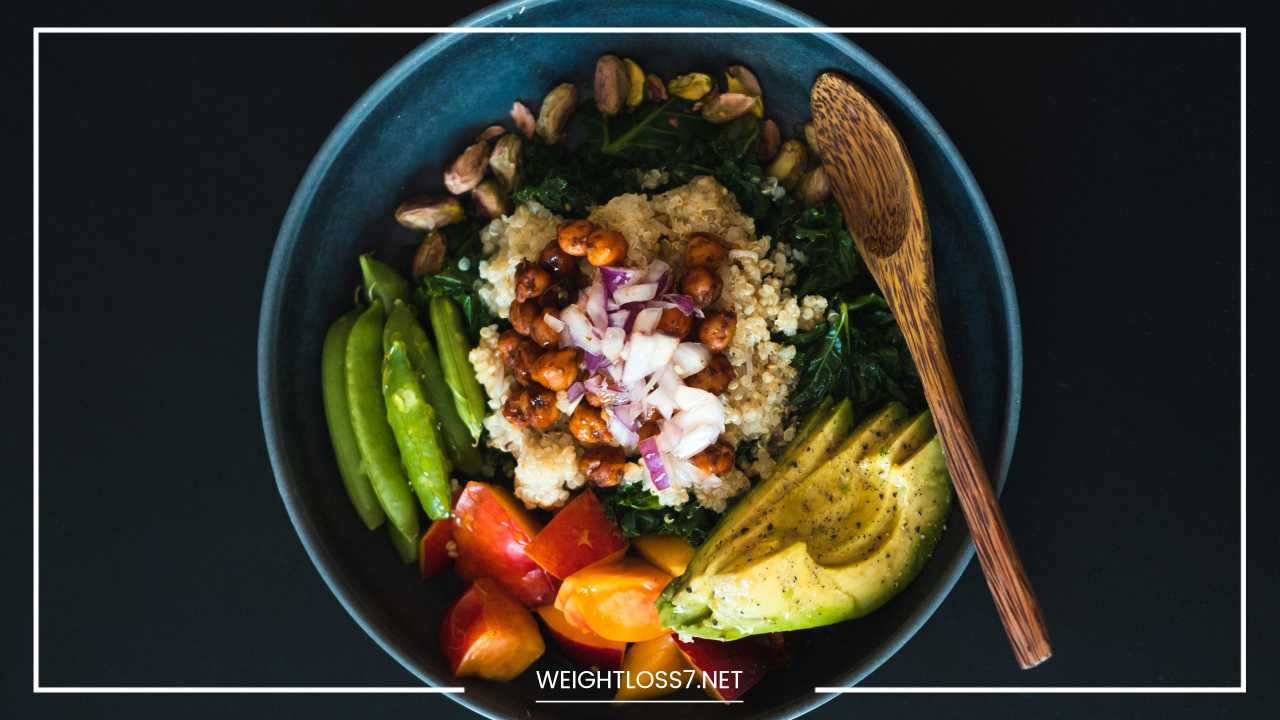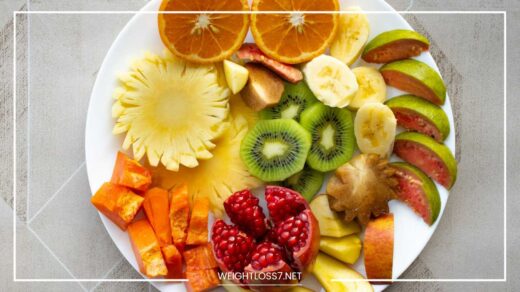Gluten Free Diet: Feel Great & Stay Healthy!

Gluten Free Diet
Unveiling the Gluten-Free Diet: A Guide for Celiac Disease, Non-Celiac Sensitivity, and Curious Eaters
The gluten-free diet has become a mainstream phenomenon, gracing supermarket shelves and restaurant menus worldwide. But what exactly is gluten, and who should consider adopting a gluten-free lifestyle?
This comprehensive guide delves deep into the world of gluten-free eating, exploring its purpose, potential benefits, challenges, and the practicalities of navigating it successfully.
Unmasking the Gluten Mystery: Understanding the Invisible Culprit
Gluten is a protein complex found in grains like wheat, barley, rye, and triticale (a wheat-rye hybrid). It acts as a binding agent, providing structure to bread and elasticity to dough.
While most people digest gluten without issue, for individuals with celiac disease or non-celiac gluten sensitivity, consuming gluten triggers an immune response that can lead to a cascade of health problems.
Celiac Disease: When the Body Turns Against Gluten
Celiac disease is an autoimmune disorder where the ingestion of gluten triggers an attack on the small intestine. This damage disrupts the absorption of essential nutrients, leading to a range of symptoms, including:
- Digestive Distress: Diarrhea, constipation, bloating, abdominal pain, and cramping are common.
- Malnutrition: Impaired nutrient absorption can lead to weight loss, fatigue, and deficiencies in iron, vitamins, and minerals.
- Dermatological Issues: Skin rashes like dermatitis herpetiformis may appear.
- Dental Problems: Children with celiac disease may experience dental enamel defects.
- Neurological Issues: In severe cases, long-term gluten exposure can lead to neurological problems.
Left undiagnosed and untreated, celiac disease can lead to serious long-term complications like osteoporosis, malnutrition, and even neurological problems.
The only effective treatment for celiac disease is a strict, lifelong adherence to a gluten-free diet.
Non-Celiac Gluten Sensitivity: The Gluten Intolerance Spectrum
Non-celiac gluten sensitivity (NCGS) exists in a grey area compared to celiac disease. Individuals with NCGS experience gluten-induced symptoms without the presence of the characteristic intestinal damage seen in celiac disease.
The exact reasons behind NCGS are still being unraveled, but it’s believed to be a reaction to components of gluten other than the protein itself, or an increased sensitivity to the breakdown products of gluten digestion.
Symptoms of NCGS can mimic those of celiac disease, but are often less severe and may not always involve digestive issues. These can include:
- Bloating, gas, and abdominal discomfort
- Fatigue and headaches
- Joint pain and muscle aches
- Brain fog and difficulty concentrating
- Mood swings and anxiety
Is Going Gluten-Free the Right Choice for You?
If you suspect you might have celiac disease or NCGS, consulting a healthcare professional is crucial. Diagnosis typically involves blood tests to detect antibodies produced in response to gluten.
In some cases, an intestinal biopsy may be necessary to confirm the presence of intestinal damage characteristic of celiac disease. Once diagnosed with celiac disease, a gluten-free diet becomes a medical necessity.
For those without a formal diagnosis but experiencing discomfort after consuming gluten, a trial elimination period can be a helpful tool.
This involves removing gluten from your diet for a set period (typically 4-6 weeks) and monitoring for symptom improvement. Reintroducing gluten can help confirm if it’s the culprit behind your woes.
It’s important to note that this elimination process should be done under the guidance of a healthcare professional or registered dietitian to ensure you’re still meeting your nutritional needs during the gluten-free phase.
Embarking on a Gluten-Free Journey: A World of Delicious Possibilities
Contrary to popular belief, a gluten-free diet doesn’t have to be synonymous with deprivation or bland, flavorless meals. There’s a vibrant world of naturally gluten-free foods waiting to be explored. Here’s a peek into your gluten-free pantry:
- Fruits and Vegetables: The foundation of a healthy diet, all fresh produce is naturally gluten-free, offering a rainbow of colors, vitamins, minerals, and fiber.
- Protein Powerhouses: Lean meats, poultry, fish, eggs, and legumes like beans and lentils provide essential protein for building and maintaining muscle mass. Don’t forget nuts and seeds – they’re protein and healthy fat powerhouses in a compact package.
- Gluten-Free Grains: Embrace the diversity of naturally gluten-free grains like quinoa, rice (including brown rice, black rice, and wild rice), buckwheat, millet, sorghum, and corn. Explore the world of certified gluten-free oats, a source of fiber and complex carbohydrates.
- Dairy Delights: Milk, cheese, and yogurt are generally safe for those without lactose intolerance. Opt for plain varieties and check labels for added gluten in flavored options.
Building a Balanced Gluten-Free Plate: Beyond the Basics
While a gluten-free diet allows for a wide range of delicious and nutritious foods, it’s important to prioritize whole, unprocessed options to ensure you’re getting the vitamins, minerals, and fiber your body needs. Here are some tips for creating a balanced gluten-free plate:
- Make Half Your Plate Colorful: Fill at least half of your plate with a variety of colorful fruits and vegetables. Aim for a mix of fruits and vegetables from different color groups to ensure you’re getting a wide range of essential nutrients.
- Protein at Every Meal: Include a lean protein source at each meal and snack to promote satiety, support muscle health, and regulate blood sugar levels. Rotate your protein choices throughout the week for a variety of nutrients and flavors.
- Healthy Fats are Your Friends: Don’t be afraid of healthy fats! Include unsaturated fats from sources like avocados, nuts, seeds, olives, and olive oil in your diet. These fats are essential for nutrient absorption, cell health, and hormone production.
- Label Literacy is Key: Gluten can hide in unexpected places. Always check food labels carefully and look for certifications like “gluten-free” or “Celiac Safe” from reputable organizations. When in doubt, don’t hesitate to contact the manufacturer directly to inquire about gluten-free status.
- Beware of Gluten-Free Pitfalls: Just because something is labeled “gluten-free” doesn’t necessarily mean it’s a healthy choice. Pre-packaged gluten-free cookies, cakes, and snacks may be high in sugar, unhealthy fats, and sodium. Focus on whole, unprocessed foods and use gluten-free substitutes sparingly.
Living Gluten-Free: Overcoming Challenges and Embracing a New Normal
Following a gluten-free diet requires dedication and vigilance. Here are some common challenges you might face and strategies to navigate them successfully:
- Dining Out: Research restaurants and menus beforehand. Look for restaurants with dedicated gluten-free menus or those known for accommodating dietary restrictions. When unsure, ask questions and clarify ingredients with wait staff or chefs. Explain your celiac disease or gluten sensitivity and don’t be afraid to advocate for your needs.
- Social Gatherings: Communicate your dietary restrictions to party hosts in advance. Offer to bring a gluten-free dish to share if you’re comfortable doing so. There are plenty of delicious and crowd-pleasing gluten-free recipes available online and in cookbooks.
- Travel Adventures: Planning is key! Research gluten-free options at your destination and pack some gluten-free snacks for the journey. Consider portable options like nuts, fruits, and vegetable sticks with a safe dip. Many travel apps can help you locate gluten-free restaurants and grocery stores on the go.
- Emotional Rollercoaster: Adjusting to a new diet can be emotionally challenging. Allow yourself time to adjust and celebrate your successes along the way. Consider joining a celiac disease or gluten sensitivity support group to connect with others who understand your journey.
The Gluten-Free Lifestyle: More Than Just a Diet
Living a gluten-free life is more than just avoiding certain foods. It’s about taking charge of your health, embracing a new way of eating, and discovering a world of delicious possibilities.
With careful planning, knowledge, and a positive attitude, you can thrive on a gluten-free diet and experience a newfound sense of well-being.
Gluten-Free Pantry: A Culinary Adventure
While the core of a gluten-free diet focuses on naturally gluten-free options, there’s a whole world of delicious possibilities waiting to be explored when it comes to gluten-free alternatives.
Here’s a deeper dive into some exciting options to add variety and flavor to your gluten-free kitchen:
- Gluten-Free Flours: Explore the world of alternative flours like almond flour, coconut flour, chickpea flour, oat flour (certified gluten-free), tapioca flour, and brown rice flour. Each flour has its unique properties and works best in specific recipes. Experiment and discover which flours work best for your baking endeavors.
- Gluten-Free Pastas and Noodles: Gone are the days of mushy, flavorless gluten-free pasta! Explore options made from legumes (like lentil or chickpea pasta), brown rice, quinoa, or corn. These alternatives offer a satisfying bite and pair well with your favorite sauces. You can also find kelp noodles (made from seaweed) for a low-carb option.
- Gluten-Free Breads and Wraps: Bread lovers rejoice! There’s a variety of gluten-free breads available, made from alternative flours or a combination. Look for brands that prioritize whole grains and limited added sugars. Similarly, gluten-free tortillas made from corn or cassava flour provide a base for delicious wraps and sandwiches.
- Gluten-Free Baking Mixes: Busy schedules needn’t mean sacrificing homemade treats. Utilize gluten-free baking mixes for pancakes, waffles, muffins, cookies, and even cakes. These mixes often cater to specific dietary needs, like nut-free or vegan options. Remember to check the ingredients list for any hidden gluten sources and adjust recipes as needed.
Thriving on a Gluten-Free Budget:
Maintaining a gluten-free diet doesn’t have to break the bank. Here are some tips for keeping your grocery bill in check:
- Plan Your Meals: Meal planning helps you avoid impulse purchases and ensures you have healthy gluten-free options on hand.
- Embrace Seasonal Produce: Seasonal fruits and vegetables are typically more affordable and offer a taste of peak freshness.
- Shop Smart: Compare prices at different grocery stores and utilize coupons whenever possible. Consider bulk-buying staples like rice, beans, and gluten-free flours for long-term cost savings.
- Get Creative with Leftovers: Repurpose leftovers into new dishes to avoid food waste. Leftover roasted vegetables can be transformed into a frittata, or leftover chicken can be used in a stir-fry or salad.
- Explore Ethnic Cuisine: Many ethnic cuisines are naturally gluten-free or easily adaptable. Explore Asian cuisine with rice noodles and stir-fries, Indian curries with gluten-free flatbreads like roti, or Mexican dishes with corn tortillas.
Living Gluten-Free with a Family:
Following a gluten-free diet as a family requires collaboration and open communication. Here are some tips for navigating a gluten-free lifestyle with your loved ones:
- Involve Everyone: Get your family involved in meal planning and grocery shopping. This fosters understanding and empowers them to make healthy choices within the gluten-free framework.
- Educate Your Children: Explain the importance of the gluten-free diet for your health in a way they can understand. Help them identify gluten-free options at school and social gatherings.
- Stock Up on Safe Snacks: Keep a variety of safe and satisfying gluten-free snacks on hand for after-school hunger pangs or quick bites between meals.
- Embrace Family Meals: Make mealtimes a shared experience. Explore gluten-free versions of family favorites or create new traditions around naturally gluten-free dishes.
- Focus on the Positive: Celebrate your successes and emphasize the health benefits of a gluten-free lifestyle for the whole family.
Final Word: A Gluten-Free Future Filled with Flavor and Well-Being
A gluten-free diet can be a transformative journey, leading to improved health, increased energy, and a newfound appreciation for delicious, wholesome food.
With knowledge, planning, and a touch of creativity, you can navigate the world of gluten-free eating with confidence.
Embrace this opportunity to explore new ingredients, discover hidden culinary gems, and create a vibrant and healthy lifestyle for yourself and your loved ones.
Remember, going gluten-free is not about restriction; it’s about empowerment and taking charge of your well-being.
Additional Resources:
- Celiac Disease Foundation: https://celiac.org/
- National Institute of Diabetes and Digestive and Kidney Diseases: https://www.niddk.nih.gov/health-information/digestive-diseases/celiac-disease
- Beyond Celiac: https://www.beyondceliac.org/
Remember, this information is not intended as a substitute for professional medical advice. Always consult with a healthcare professional or registered dietitian for personalized guidance on managing celiac disease, non-celiac gluten sensitivity, or any other dietary concerns.

















